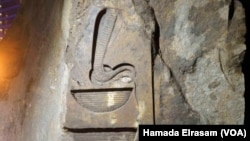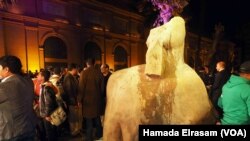A massive eight-meter statue discovered in the ground water of a Cairo slum this month is likely not a depiction of the revered Pharaoh Ramses II as first believed, Antiquities Minister Khaled Al-Anani said on Thursday.
The colossus is instead thought to be of King Psammetich I, who ruled from 664 to 610 BC and, if confirmed, would be the largest statue of the Late Period ever discovered.
Egyptian and German archaeologists found the statue in the working class area of Matariya among unfinished buildings and mud roads, but near the ruins of Ramses II's temple in the ancient city of Heliopolis.
WATCH: Egypt colossus in photos
It was initially hailed by the Antiquities Ministry as among the most important discoveries to date on the basis that it depicted Ramses the Great, the most powerful and celebrated ruler of ancient Egypt.
After examining pieces of the 8-meter statue however, Anani said its characteristics pointed to a different time.
"When the head was lifted, we started to find some features which are characteristic for other periods," he told a news conference.
A key piece of evidence is the name "Nebaa" inscribed on the statue.
"The only pharaoh who got his name 'Nebaa', is Psammetich I.
He's a pharaoh of the 26th dynasty," said Anani.
Egypt is hoping renewed interest in its ancient past could be a boon for its tourism industry, a vital source of foreign currency that has suffered many setbacks since the uprising that toppled autocrat Hosni Mubarak in 2011.
Despite the statue's clues, Anani said it could take months to determine with 100 percent certainty which historical figure it depicts as archaeologists search for additional fragments.







